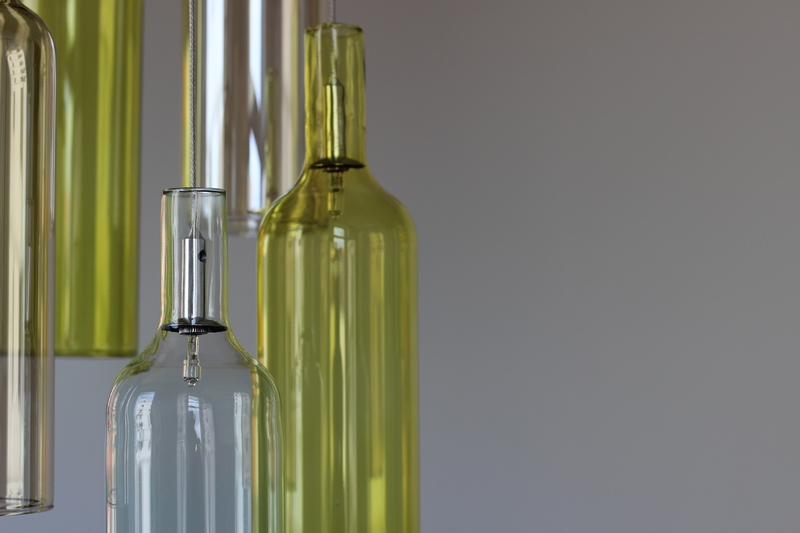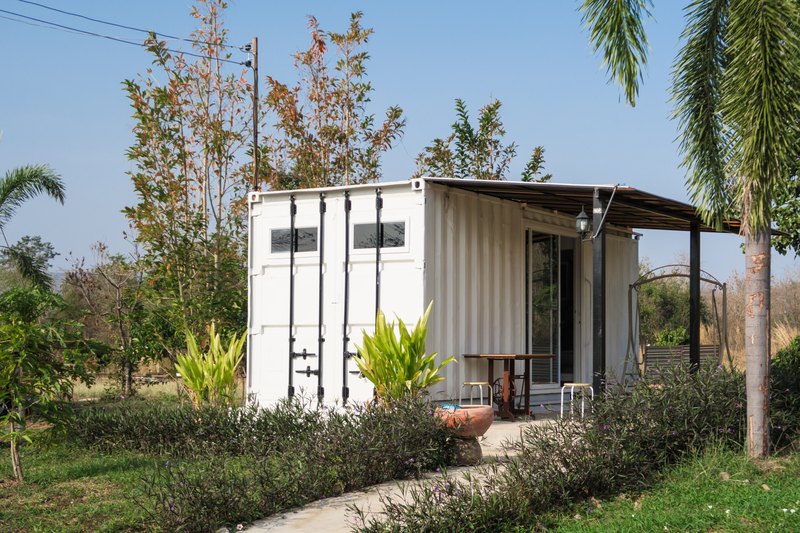Plastic Hazard List: Stay Clear of These!
Plastics are omnipresent in our daily lives - from packaging and toys to household goods and electronics. But not all plastics are created equal. Some pose serious risks to your health and the environment. This comprehensive guide explores the plastic hazard list, diving into dangerous plastic types, why they're hazardous, how to spot them, and what safer alternatives exist. Arm yourself with practical knowledge to make smarter, safer choices for you and our planet.

Why Is Identifying Hazardous Plastics Important?
- Health Risks: Certain plastics leach harmful chemicals that can interfere with hormones, lead to developmental problems, and cause other health issues.
- Environmental Impact: Hazardous plastics aren't just a personal concern; they persist in nature, harming wildlife and polluting ecosystems.
- Recycling Challenges: Most dangerous plastics are hard to recycle. This increases landfill pressure and pollution.
Understanding which plastics are hazardous helps you avoid the worst offenders and choose safer, more sustainable options.
Understanding Plastic Identification Codes
Almost every plastic product carries a resin identification code - the number in a triangle symbol, usually found on the bottom of containers. Knowing what these numbers mean goes a long way in avoiding problematic plastics. Here's a quick overview:
- #1 PET/PETE (Polyethylene Terephthalate): Common in water and soda bottles. Widely recycled.
- #2 HDPE (High-Density Polyethylene): Used in milk jugs, detergent bottles. Recyclable and generally considered safe.
- #3 PVC (Polyvinyl Chloride): Found in pipes, vinyl flooring. Highly hazardous.
- #4 LDPE (Low-Density Polyethylene): Shopping bags, bread bags. Lower hazard, recyclable in some localities.
- #5 PP (Polypropylene): Yogurt containers, straws, bottle caps.
- #6 PS (Polystyrene): Foam cups, takeout containers. Health and environmental hazard.
- #7 Other (often Polycarbonate): Includes various plastics, often with toxic additives like BPA.
Focus on the worse offenders, especially PVC (#3), Polystyrene (#6), and many products in the #7 category. These commonly appear on the plastic hazard list.
The Plastic Hazard List: Types to Avoid
1. Polyvinyl Chloride (PVC) - #3
Why it's hazardous: PVC contains phthalates and may release vinyl chloride, a well-known carcinogen, especially when heated or burned. Production and disposal of PVC release toxic dioxins into the environment.
- Health Concerns: Endocrine disruption, reproductive issues, cancer risk, impaired immune function.
- Common Uses: Plumbing pipes, shrink wrap, food packaging, children's toys, vinyl flooring.
Avoid if possible. Recent reports have linked exposure from soft PVC toys and wraps to adverse health outcomes in children.
2. Polystyrene (PS) - #6
Why it's hazardous: Polystyrene, also called styrofoam, is made from styrene monomer, a potential human carcinogen according to the EPA. It is easily broken into microplastics, contaminating food and beverages.
- Health Concerns: Nervous system effects, hormone disruption, probable carcinogen, air quality hazard when burned.
- Common Uses: Disposable coffee cups, takeout food containers, plates, packaging peanuts.
_Disposable polystyrene is banned in many cities worldwide due to its persistence and health risks._
3. Polycarbonate & Other (Often #7)
Why it's hazardous: Category #7 is a catch-all for plastics not grouped in #1-6, but a major offender is polycarbonate which can leach the endocrine-disrupting chemical BPA (bisphenol A).
- Health Concerns: Hormone disruption, developmental effects in children, links to diabetes and heart disease.
- Common Uses: Water coolers, sports water bottles (especially older ones), medical equipment, food can linings, microwave ovenware.
_Go for "BPA-Free" labeled products, though it's wise to limit use of all #7 plastics as "BPA-Free" alternatives may contain equally risky substitutes like BPS or BPF._
4. Plasticizers and Additives in Soft Plastics
Many everyday plastic products (especially soft, flexible ones) contain additives like phthalates or flame retardants, which are not tightly bound to the plastic and leach out over time.
- Health Concerns: Disrupted hormones, fertility impact, respiratory effects (especially in children).
- Common Uses: Shower curtains, raincoats, inflatables, vinyl flooring, cheap toys.
_If a plastic product smells strongly when new, it likely contains volatile, hazardous additives._
Dangers of Hazardous Plastics: What Science Says
Over the last two decades, scientific research has highlighted the complex web of risks associated with harmful plastics. Here are some key plastic hazard list health risks:
- Endocrine Disruption: Many hazardous plastics (PVC, polycarbonate/BPA, phthalates) are hormone disruptors.
- Carcinogenicity: Substances like vinyl chloride (in PVC) and styrene (in polystyrene) are classified as human carcinogens or probable carcinogens.
- Child Development: Prenatal and early life exposure to plasticizers and certain monomers are linked to developmental neurotoxicity, asthma, and behavioral problems.
- Immune Effects: Chronic exposure to hazardous plastics can weaken immune system response.
- Microplastics: Polystyrene and other fragile plastics degrade into microplastics, contaminating water, soil, and the food chain. Recent studies suggest microplastics can enter your bloodstream and organs, posing unknown health effects.
Did you know? According to studies, people ingest thousands of microplastic particles yearly - more in regions where bottled water or food is packaged in risky plastics.
How to Spot Problematic Plastics
To effectively avoid plastic hazards, here's what you can do:
Look for Resin Codes
- Check the triangle symbol (usually on the bottom of containers).
- Stay clear of #3 (PVC), #6 (PS), and any ambiguous #7 plastics.
- For soft, flexible plastics, avoid items that don't specify "phthalate-free."
Beware of "Unlabeled" or Unmarked Plastics
- If you don't see a number or recycling symbol, avoid contact with food or drink, especially when the plastic is heated.
- Discard old, scratched, or cloudy plastic containers regardless of their code.
Watch for Smells and Flexibility
- New, strong "plastic smell" can indicate off-gassing chemicals, especially in products like shower curtains, inflatables, and children's toys.
- Soft, bendy plastics used in cheap toys or gadgets can indicate high levels of hazardous plasticizers.
Limit Use with Food and Drinks
- Never microwave food in #3, #6, or #7 plastics.
- Replace old plastic food storage containers with safer glass or stainless steel options.
- Don't reuse single-use plastics like water or soda bottles designed for one use only.
Plastic Hazard List: Products and Situations to Avoid
The Most Hazardous Plastic Items and Uses:
- Plastic wrap and soft cling film (sheer, stretchy, often made from PVC).
- Disposable foam cups and takeout containers (polystyrene).
- Vintage or cheap plastic toys (risk of lead, phthalates, BPA).
- Food cans with BPA liners (often found in canned soups, vegetables).
- Vinyl/plastic shower curtains (PVC - notorious for strong, lingering odor).
- Old water bottles with "PC" or "#7" symbols; especially if not labeled "BPA free."
- Single-use water/soda bottles; not designed for refilling or extended use.
- Plastic utensils (some #6 polystyrene, some unknown blends).
Safer Alternatives
- Choose glass or stainless steel for food and beverage storage.
- Look for #1 (PET), #2 (HDPE), or #5 (PP) plastics for less hazardous alternatives. These are generally more stable and better for recycling.
- Buy products labelled "phthalate-free," "BPA-free," or "PVC-free." But remember, safety claims are sometimes poorly regulated. Prioritize glass and metal where possible.
- Use natural materials like cotton, wood, or bamboo instead of soft, vinyl-based options for baby products, toys, and home goods.
Frequently Asked Questions: Plastics to Avoid
Q: Why are soft plastic toys especially dangerous?
Soft, flexible toys often contain phthalates or other plasticizers to make them bendy. These can leach out when chewed (by children and pets) and are linked to hormonal disruption, reproductive problems, and even increased cancer risk.
Q: Can I safely microwave any plastic?
It's safest to avoid microwaving plastic altogether. Heating plastics increases the risk of chemicals leaching into food. Even "microwave-safe" labels don't guarantee absence of leachable toxins, especially in older or low-quality products.
Q: Are "BPA-Free" plastics completely safe?
No. "BPA-Free" plastics sometimes use chemical alternatives like BPS or BPF, which may have similar health impacts. Whenever possible, choose glass or stainless steel, especially for hot food and drinks.
Q: How do plastics affect the environment?
Plastics (especially the hazardous types like PVC and polystyrene) don't break down easily. When disposed of improperly, they clog waterways, break into microplastics, and are ingested by wildlife. Some release toxins (dioxins, heavy metals) as they degrade, harming soil and water quality.
Making Safer Choices: Tips for Avoiding Hazardous Plastics
- Read labels carefully when buying plastic products for food storage, baby care, or children's toys.
- Support bans or regulations on dangerous plastics in your region (plastic bag bans, microbead bans, styrofoam prohibitions, etc.).
- Opt for bulk goods and fresh food whenever possible to reduce packaging waste and exposure to hazardous plastic wraps.
- Recycle properly. Only recycle items accepted in your region's recycling program. Mixing hazardous plastics can contaminate recycling batches.
- Dispose of hazardous plastics responsibly. Take old electronic items, medical plastics, or PVC products to specialized facilities if possible.

The Bigger Picture: Towards a Plastic-Safe Future
Understanding the plastic hazard list is a major step towards safeguarding your health and the planet. Reducing exposure to hazardous plastics doesn't mean eliminating all plastic, but rather making smarter, more mindful choices.
Globally, there is increasing legislative and consumer action against the most hazardous plastics. From bans on polystyrene foam and single-use bags to widespread campaigns against BPA, change is in motion. Your voice counts: Support plastic-safe initiatives, educate others, and choose responsibly on every trip to the store.
Key Takeaways: Stay Clear of These Plastics
- Stay away from products and packaging marked #3 (PVC), #6 (Polystyrene), and ambiguous #7 categories (esp. polycarbonate/bisphenols)
- Avoid soft, flexible plastics with a strong odor or no labeling, especially for babies and food use.
- Replace plastic food containers and drinkware with glass or stainless steel whenever possible.
- Dispose of hazardous plastics responsibly to help protect ecosystems.
By learning the plastic hazard list and understanding which plastics to avoid, you can make choices that protect your health, your loved ones, and the environment for generations to come.
Further Reading & References
- Environmental Working Group: Healthy Living Guides
- CDC - Bisphenol A (BPA) Fact Sheet
- US Environmental Protection Agency: Plastics & Health
- HealthLine: Toxic Plastics to Avoid
Strong awareness is your first step in avoiding the risks. Stay clear of hazardous plastics and lead the way to a safer, cleaner world!